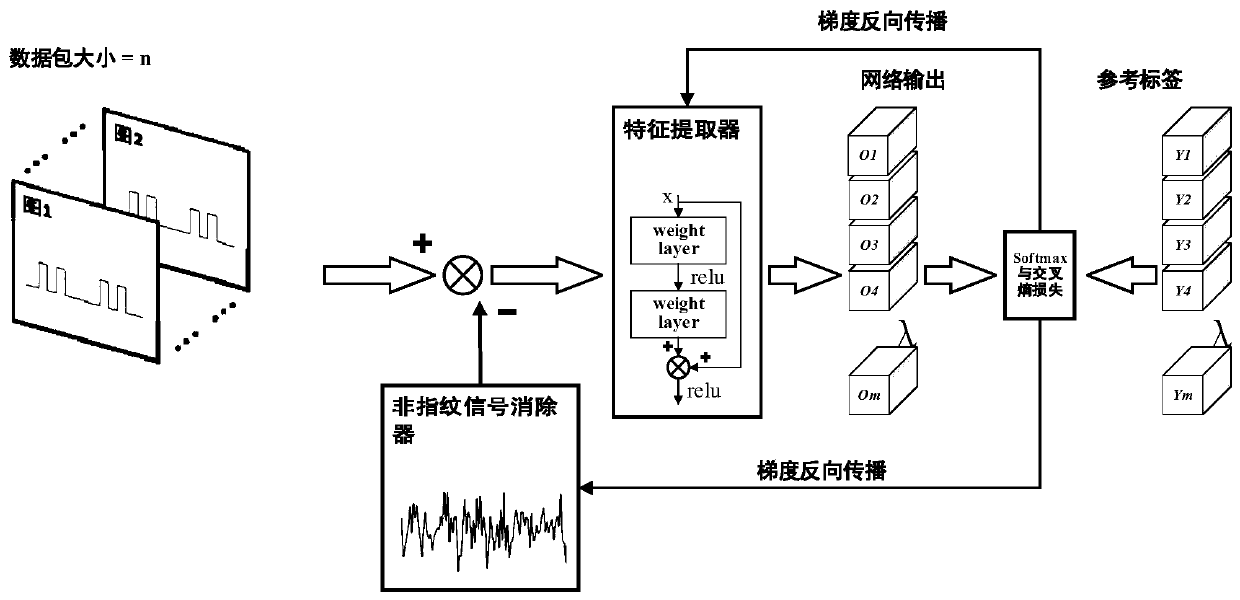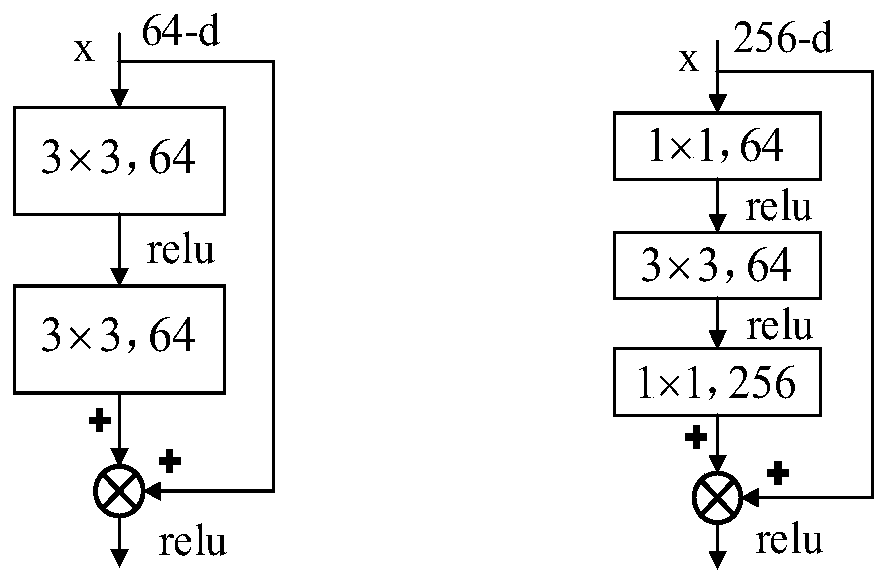Radar radiation source deep learning identification method based on non-fingerprint signal eliminator
A fingerprint signal and deep learning technology, applied in the field of deep learning recognition of radar radiation sources, can solve the problems of not being clearly distinguished and decoupled, the impact of final recognition accuracy, and signal mixing, so as to improve recognition accuracy and stability, High radiation source identification accuracy and stability, and the effect of improving identification accuracy
- Summary
- Abstract
- Description
- Claims
- Application Information
AI Technical Summary
Problems solved by technology
Method used
Image
Examples
Embodiment Construction
[0040] The present invention will be described in detail below according to the accompanying drawings.
[0041] 1) Signal preprocessing;
[0042] Depend on figure 1, the fixed network input picture specification is 224 pixels*224 pixels*3 channels, if the number of sampling points of the radiation source signal a≥224 2 =50176, then take continuous 50176 sampling point data and fill them into the matrix M∈R row by row in order 224×224 , and then copy it to get the matrix I∈R 224×224×3 , to complete the data preprocessing; if the number of sampling points a<50176, fill in 0 after the sequence until it reaches a certain square number, fill it to a square matrix M of a certain size, and then use the interpolation algorithm to enlarge it to a size of 224×224, Then copy to get the input image I.
[0043] 2) Data set division;
[0044] In the training process of deep learning convolutional neural network, the data needs to be divided into training set, verification set and test ...
PUM
 Login to View More
Login to View More Abstract
Description
Claims
Application Information
 Login to View More
Login to View More - R&D
- Intellectual Property
- Life Sciences
- Materials
- Tech Scout
- Unparalleled Data Quality
- Higher Quality Content
- 60% Fewer Hallucinations
Browse by: Latest US Patents, China's latest patents, Technical Efficacy Thesaurus, Application Domain, Technology Topic, Popular Technical Reports.
© 2025 PatSnap. All rights reserved.Legal|Privacy policy|Modern Slavery Act Transparency Statement|Sitemap|About US| Contact US: help@patsnap.com



